FASHNAI
AI Fashion News 2025: How Brands Are Using AI in Campaigns
AI is becoming mainstream in fashion, powering campaigns and catalogs as disclosure and ethics questions grow. Major brands already use it; see how it’s done.
Written by Brenda Barron | October 1, 2025
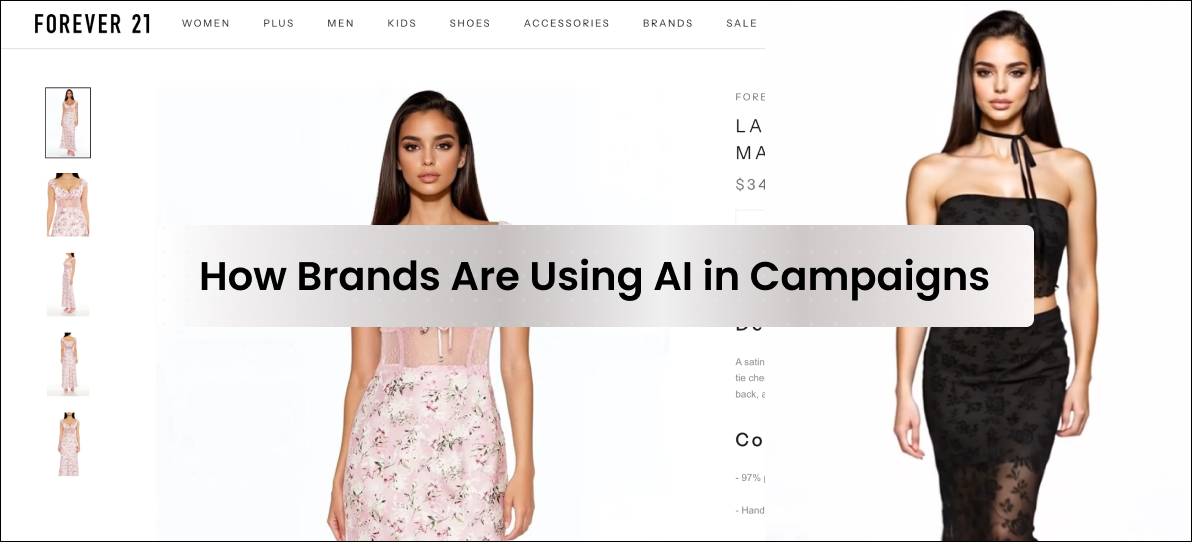
In this article
AI isn’t a side experiment in fashion anymore. It’s everywhere. From global retailers to fast-moving online shops, brands are turning to AI for campaigns, catalogs, and even runway visuals. The drivers are clear: it’s faster, cheaper, and more flexible than traditional shoots. At the same time, questions about disclosure, regulation, and authenticity are becoming part of the conversation.
2025 is shaping up to be the year AI fashion went mainstream.
Who’s using AI in fashion right now?
To begin, let’s take a look at some campaigns that have popped up this year so far that relied on AI in one way or another:
H&M
According to Vogue Business, H&M rolled out “digital twins” of real models, which helped to speed up campaigns while keeping brand control over image rights.
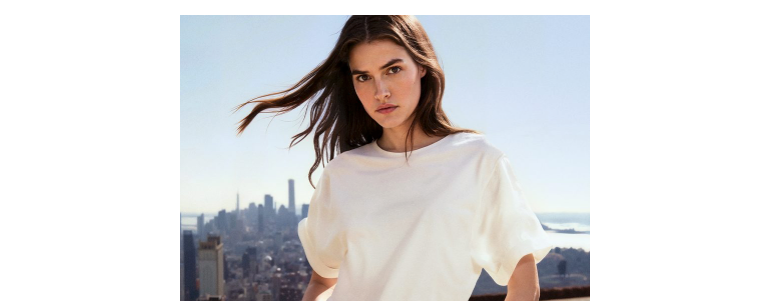
H&M used digital twins for its campaigns.
Zalando
Zalando reported that 70% of its late-2024 editorial images were AI-generated. And in 2025, it’s leaning even harder into digital-first catalogs.
Mango
Mango launched a teen campaign built entirely with AI and now uses templated AI ad variants to scale creative.
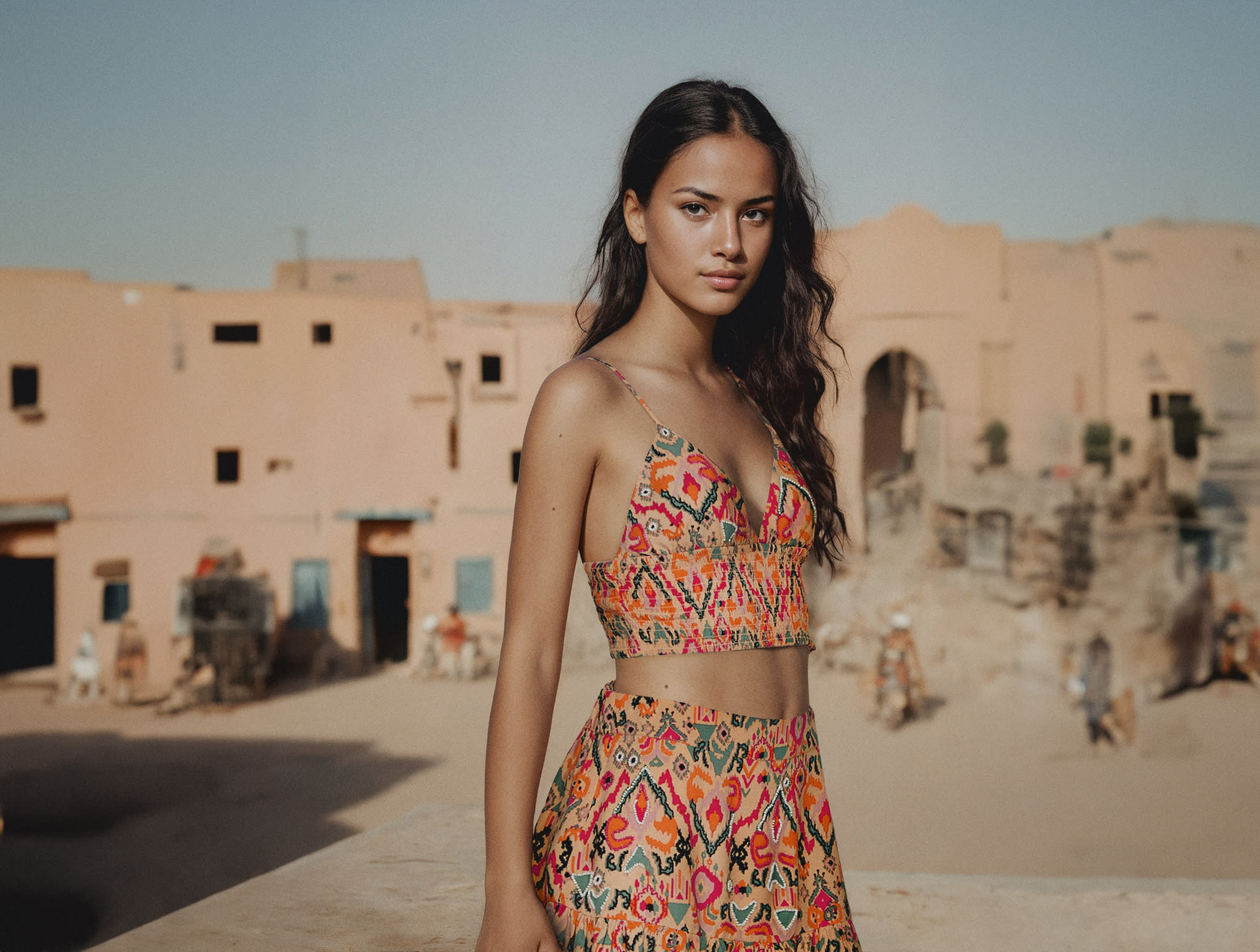
Mango ran a dedicated AI campaign for a teen line.
Guess
GUESS ran an AI-model ad in Vogue that sparked debate about disclosure, according to ABC News.
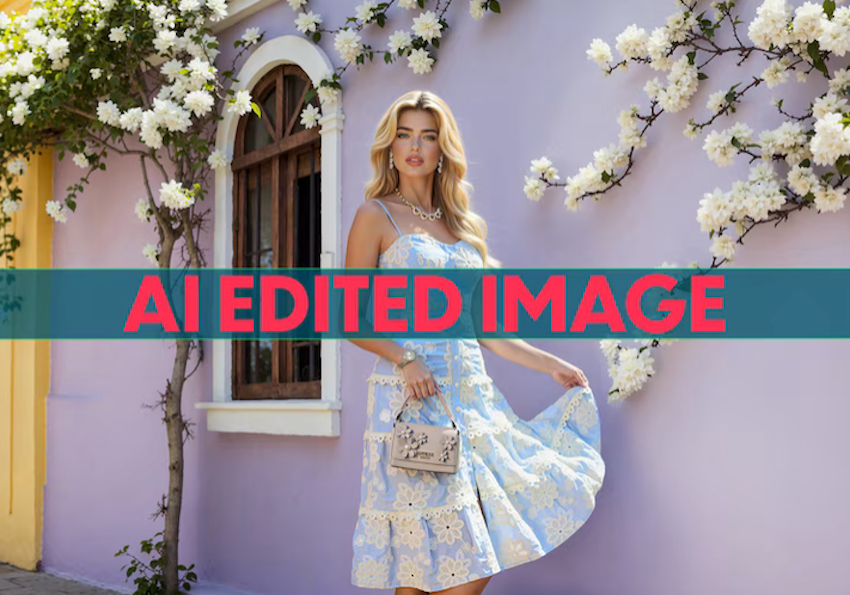
Guess used AI-edited models in its campaigns.
Forever 21 & Fashion Nova
Forever 21 and Fashion Nova might be quietly using AI models on product pages, spotted by shoppers and creators online.
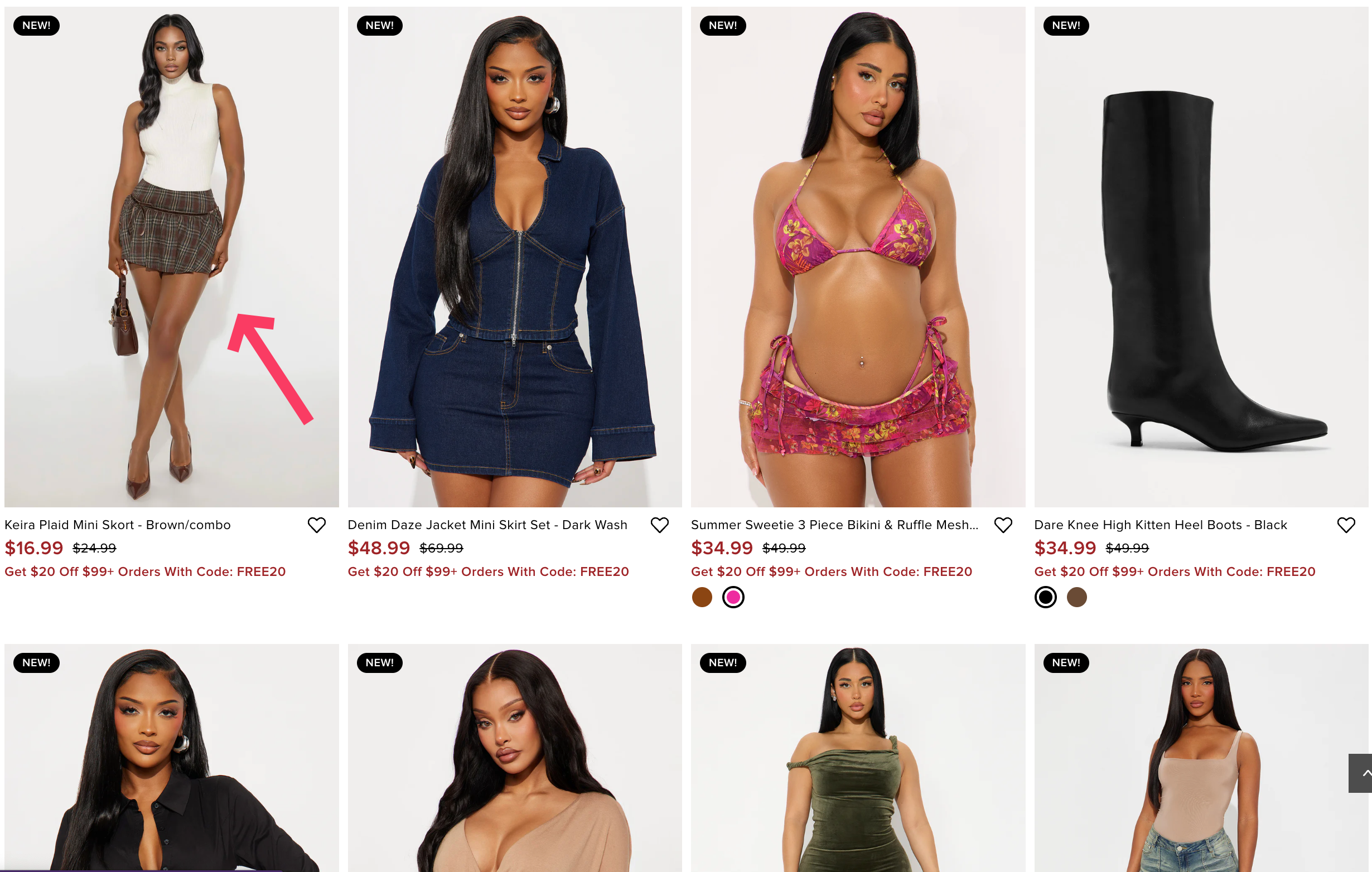
An example of likely AI-generated model images on Fashion Nova.
American Eagle
American Eagle blended 3D and AI tools in its Sydney Sweeney campaign, specifically to power interactive billboards with AI try-on technology. AI is also used in video ads. When Sweeney gets into the car this ad (link to YouTube), AI takes over as the car peels out.
New York Fashion Week
New York Fashion Week featured AI-generated visuals, from vintage recreations to digital try-ons, too.
Risks, debates, and regulations
AI in fashion isn’t all good news, however. Consumers are pushing for clear disclosure, especially after high-profile cases like GUESS’s Vogue ad.
Regulators are stepping in too: New York’s Fashion Workers Act as of June 2025 requires explicit consent for digital replicas of models. And when things go wrong, it shows how quickly trust can erode if quality control or ethics slip.
What fashion brands are really asking for in 2025
For brands, AI is no longer about novelty. They want tools that deliver consistency. That means, they want images that look like they came from the same photoshoot with the same face and body across multiple shots, clothes rendered accurately every time, and backgrounds that don’t shift from one generation to the next.
Without that cohesion, AI outputs feel more like mood boards than campaign assets. And they’re not very effective for real-world scenarios.
The next big ask: Consistency in AI fashion shoots
In 2025, consistency is the top priority for brands using AI. A single campaign might require dozens of visuals, and if faces, bodies, or clothing shift from one image to another, the results look unprofessional.
Traditional photoshoots solve this naturally with the same model, lighting, and setting but AI often struggles to keep things uniform.
Brands now expect AI platforms to behave like a real studio team: the same model identity across poses, clothing that fits correctly in every shot, and backgrounds that match (and stay the same) for a cohesive look. Without this, AI imagery just isn’t campaign-ready.
How to get campaign consistency with FASHN AI
To show what this looks like, we used FASHN AI to create a consistent campaign as we mentioned earlier. The goal wasn’t just to generate a few good images. Rather, it was to keep them consistent.
To do this, I logged into FASHN AI and went to the Model Swap section. This feature allows you to take photoshoots created with real models or earlier AI outputs and refine them into consistent, on-brand visuals. By keeping the same model across different shots, it helps campaigns maintain a polished and unified look instead of appearing like a mix of unrelated images.
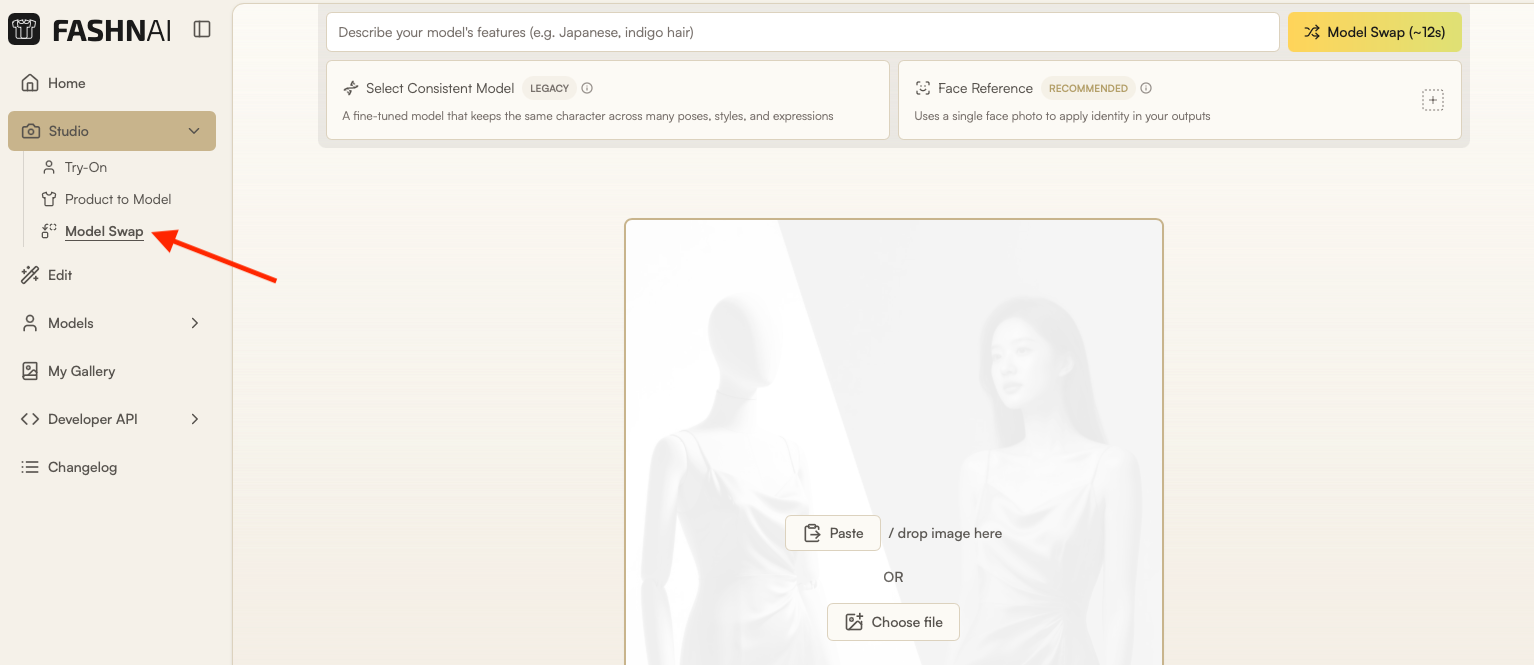
From here, upload the photo of your product on a model and then click Face Reference.

This is a great way to keep the model consistent, because you’re using an actual model’s face! This way, no matter the background you decide to use or the clothing you want to feature, the model will stay the same.
Let's see how it works in practice with a fashion stock photo and a face reference:
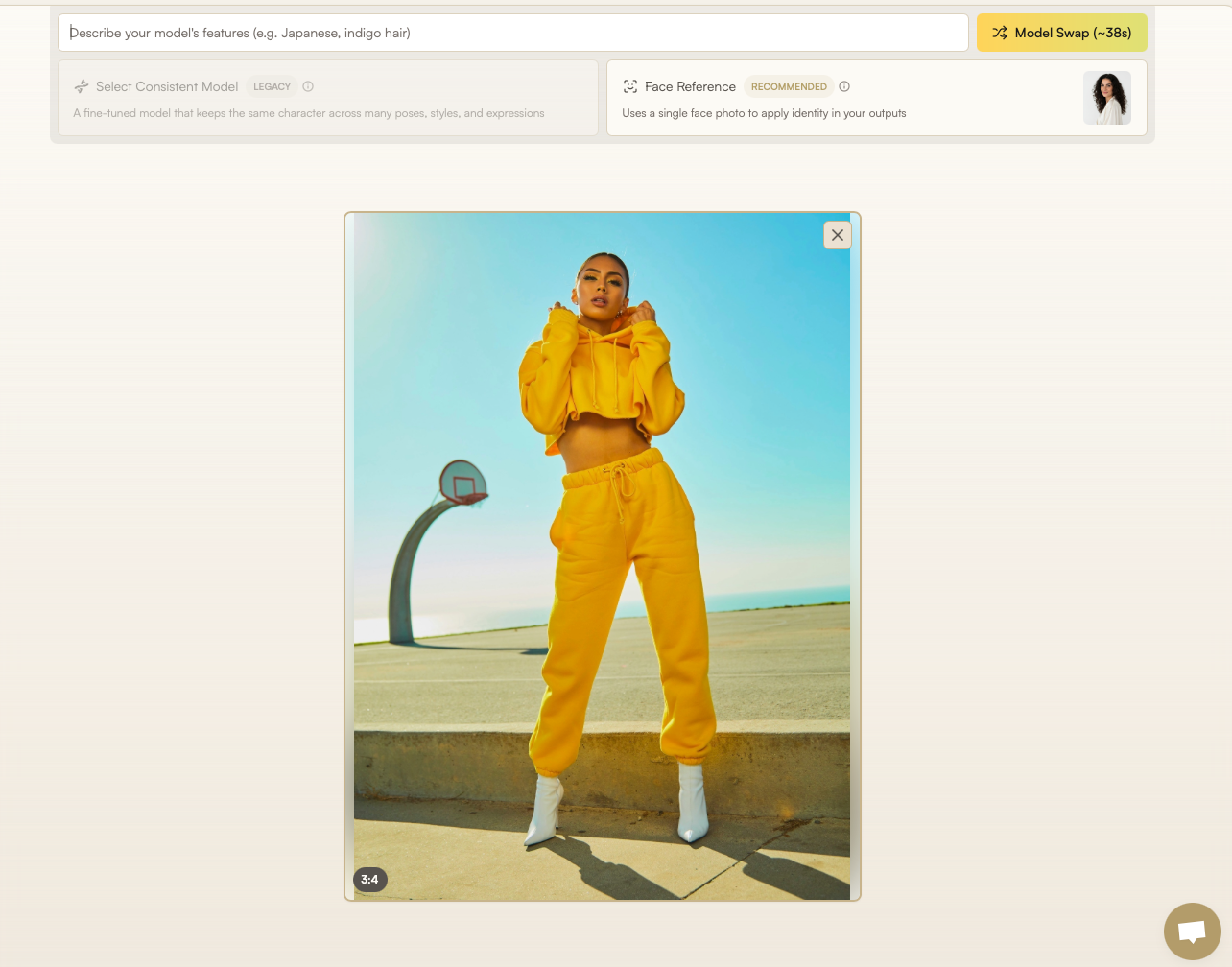
Model stock photo sourced from Upslash
And this AI generated model as a face reference (also created in the FASHN AI app):
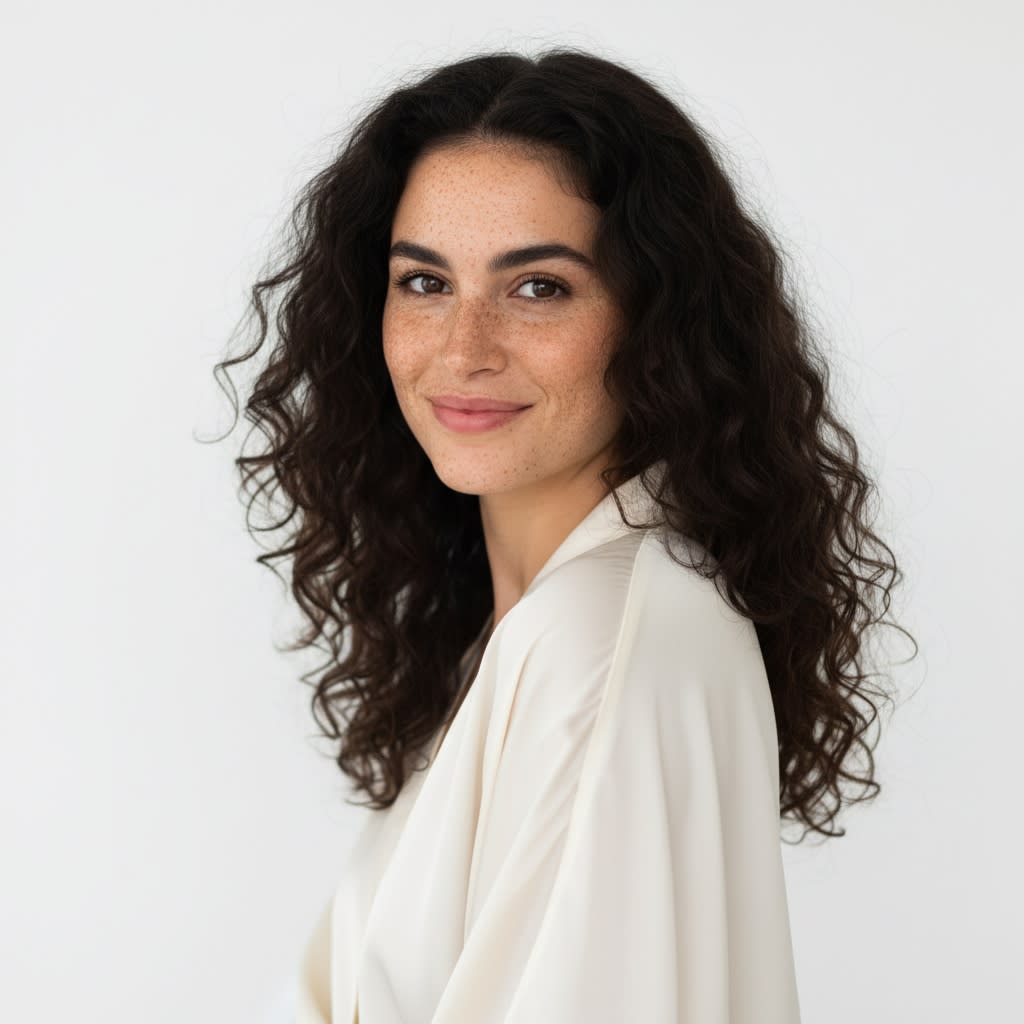
AI model generated in the FASHN AI app
After clicking Model Swap, I got this result:
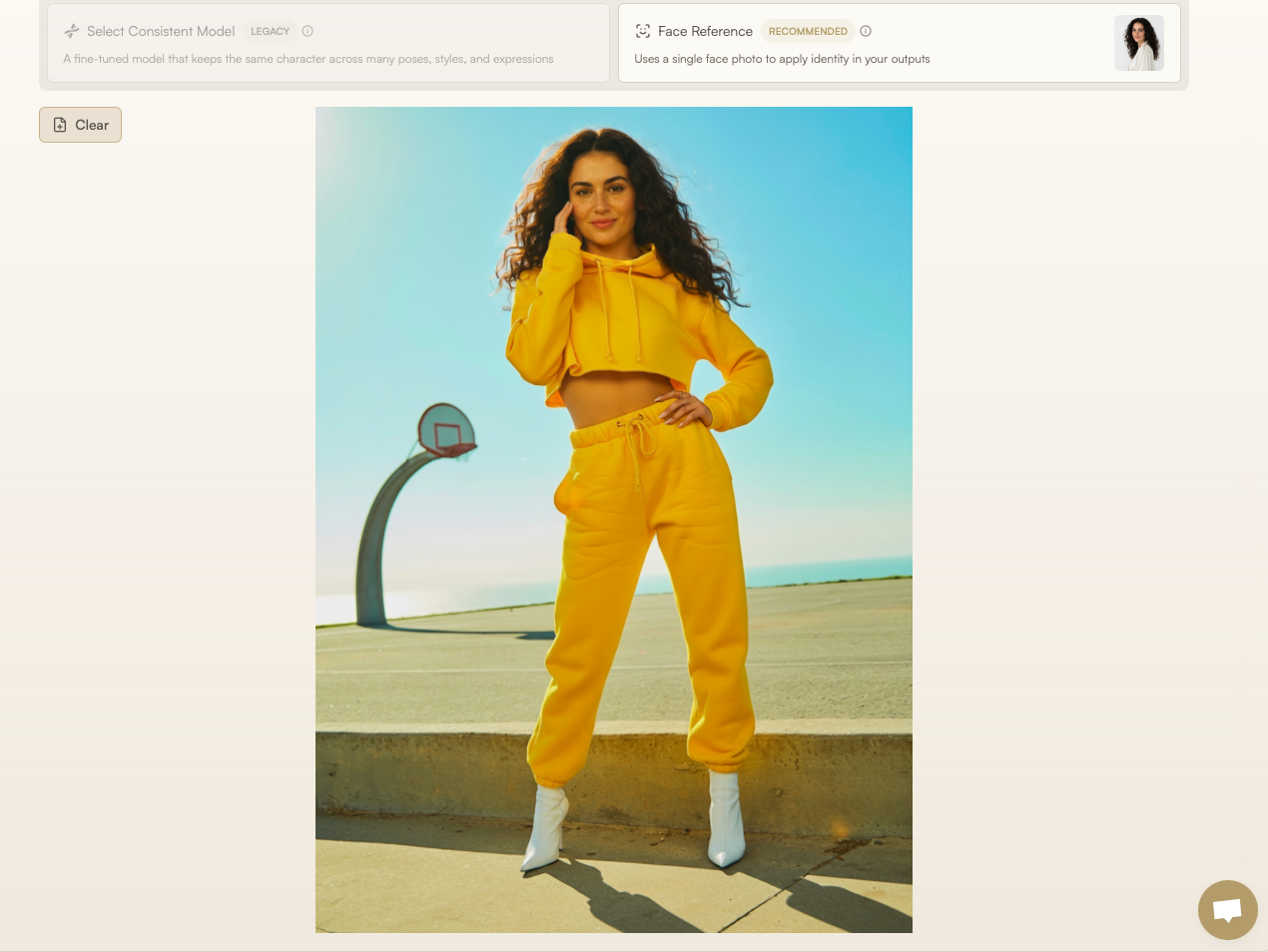
Using this method means the same model identity can be carried across multiple poses, with the clothing fit remaining accurate, and the backgrounds matching. The set will then feel like a real photoshoot.
As another experiment, I prompted FASHN AI to also change her pose:
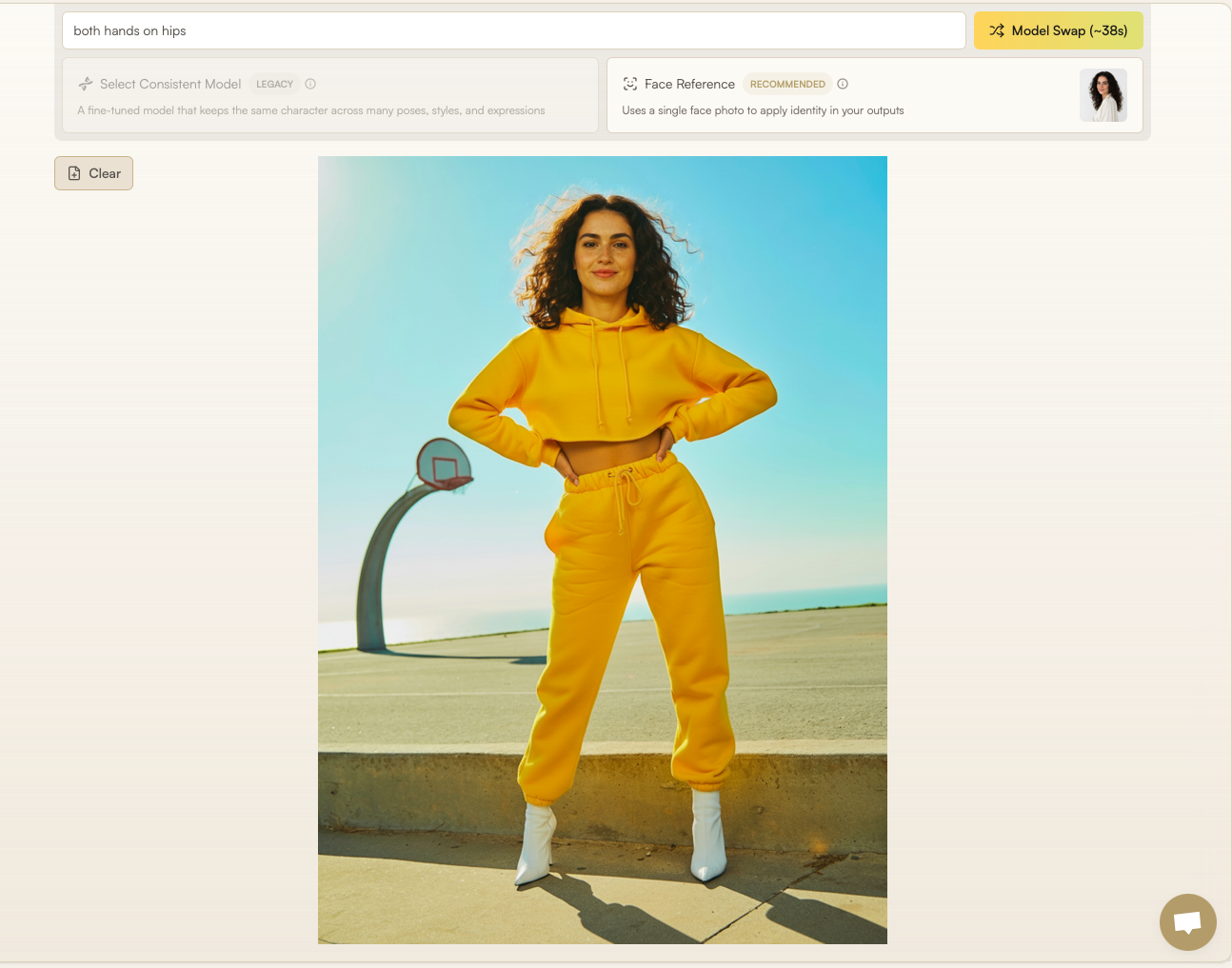
Let's see the same model now in a different photoshoot to see how consistent it is across different photo styles:
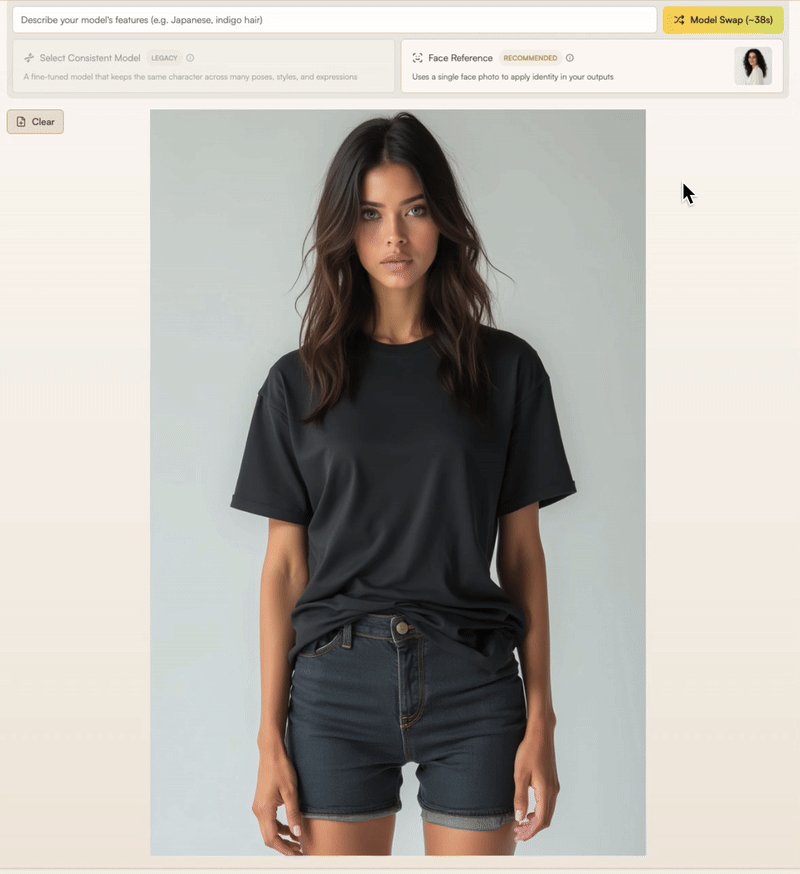
That’s the direction AI in fashion is heading. Brands don’t just want striking images. They want full campaigns that look polished, cohesive, and ready to publish. With FASHN AI, that’s exactly what they get.
Ready to create consistent AI fashion photoshoots of your own? Sign in to the FASHN AI app and start building your campaign today!